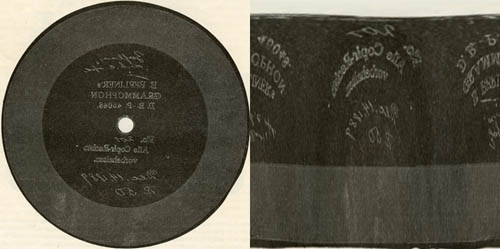Listening to a Record from a Photograph
This blew my mind. Apparently it’s possible to use a photograph of a record and get an audible recording from it.
The step-by-step process illustrated in this article called Extracting Audio from Pictures makes sense once it’s broken down. Basically you convert the round image of the grooves into a straight line…

…then you use Photoshop to boost the contrast of the lines, which become the actual waveforms you feed into ImageToSound software.

Amazing stuff. I often wonder about future generations being able to eavesdrop on people in the past by using leaps in technology.
For example on this Wikipedia page about Archaeoacoustics:
Gregory Benford’s 1979 short story “Time Shards” concerns a researcher who recovers thousand-year-old sound from a piece of pottery thrown on a wheel and inscribed with a fine wire as it spun. The sound is then analyzed to reveal conversations between the potter and his assistant in Middle English.
The idea that people’s voices would have unknowingly been recorded onto the bowl like a modern day record, locked away until a future generation figures out how to extract the audio, is awesome. True, Mythbusters busted this myth, but I wouldn’t fully discount the general concept of learning more from old data with better and better tools. (Think the dino DNA in Jurassic Park.)
Taking that pottery example further, I wonder if when I take a photo with my iPhone, a future generation will be able to determine my mood that day by examining whatever minuscule image artifacts my brainwaves caused in the image sensor.
It sounds crazy, but not much crazier than one ancient potter telling his buddy to keep his voice down so the future can’t eavesdrop on their clay.